Isidro Ramírez is a Spanish photographer now based in Singapore. After living, working and studying in the UK for 20 years he moved to Singapore in 2011 where he lecturers in photography at Temasek Polytechnic. His work shows a delicate balance of what is real and what is perceived, between the fabric of place and the texture of memory. Can you briefly describe your career - how did you get to Temasek Polytechnic? What was your first teaching experience? What directed you towards a teaching career?
Isidro Ramírez (IR): I decided to pursue a career in teaching soon after I graduated from The University of Brighton in 1998. After graduation I worked for a couple of years as a freelance photographer for some magazines and newspapers. It was then that I realised that freelance work was not for me since I was more interested in doing my self-initiated projects than working in commissions and I was also more interested in art photography than editorial work. I have to highlight the work I did for Victoria Luckens for the Independent on Sunday Magazine though. Victoria understood my interests and commissioned me to do some interesting features for her magazine. In 2001, I decided to do a teaching postgraduate course and since then I have been teaching and lecturing in photography in different colleges and universities in the UK and now also in Singapore.
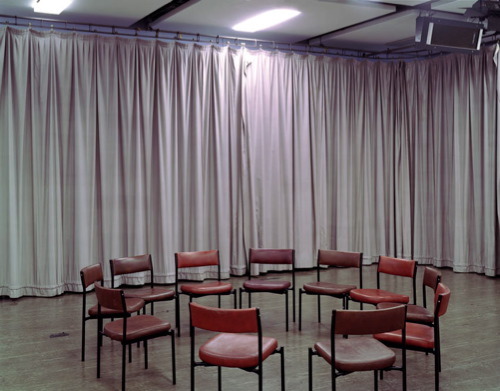
© Isidro Ramírez, Classroom No. 15
My first teaching experience was at Tower Hamlets College in London. I worked there as an interim for 6 months. I taught adolescents doing their GCSC and A levels in photography. I find teaching to be very satisfying – to see young people growing in front of you for an extended period of time is truly rewarding.
You’re now teaching and involved with the Temasek Polytechnic in Singapore. Can you describe this new challenge? What differences have you been able to appreciate in this period with European schools?
IR: Singapore is a very westernised country and a British ex colony so I found that the education system has many similarities and, of course, lectures, crits and tutorials are conducted in English so there is no real issue with that. I found that my transition to teaching in Singapore has been very smooth and easy.
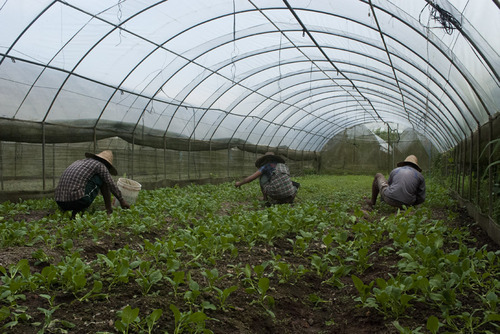 © Too Hui Ting, 1% (student work)
© Too Hui Ting, 1% (student work)
This is undoubtedly due to the general character of Singaporean students whom I found to be very respectful and hard working. I also find that there is a communal identity here in Temasek. In general, students are proud to be part of the Temasek community and relish the opportunities and challenges offered to them.
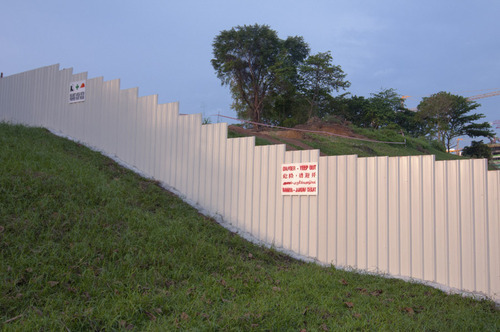
© Sara Lee, Barriers (student work)
What about your career as a student. Please tell us about the MA Photography and Urban Cultures, Goldsmiths College, University of London. What other school experiences were important for you and why? Which professors do you remember with pleasure?
IR: Without a doubt, Goldsmiths and The Photography and Urban Cultures MA course has been the most influential experience in my career as a student. My degree at the University of Brighton was also a great experience but it was only later at Goldsmiths that my ideas started to clarify. The Photography and Urban Culture MA is part of the Centre for Urban and Community research (CUCR) and, as such, it is heavily based in urban theory. One aspect to highlight about the course is the different backgrounds from which the students come from. Artists, sociologist, architects, academics and practitioners. This course is academically demanding and unlike most Photography MAs, we were expected to write many essays before our final dissertation. I have been very fortunate to meet and to being taught by great photographers both at Brighton and Golsmiths but Paul Halliday at Goldsmith has been a constant figure and, since graduation in 2006, I have had the opportunity to work with him in many different projects.
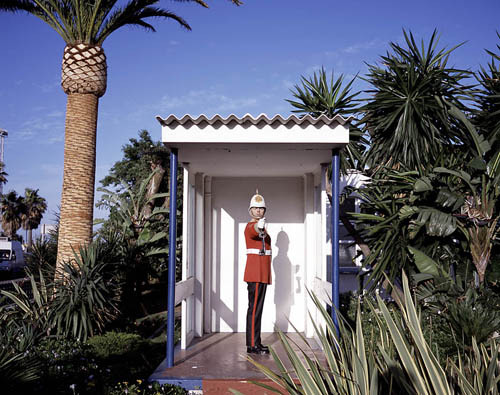
© Isidro Ramírez, Familiar Landscape No.1
Photography is a subjective experience of space, and therefore limited. The intention of the document is useful to point out geographical and cultural situations never exhaustive in the present. However, the time value of the investigation grows over time. The increase in research and publication of archival materials is a sure proof. How do you relate to the dimension of time, or rather the evolution in the meaning of your work?
IR: The way photographs are understood depends on a variety of factors. Photographers control some of these but most are beyond their control. This is a topic that has been explored by many in a variety of ways. In my case, when I was working in Closed for Winter I tried to make photographs that held an elusive and ambivalent meaning but that were related by topic and concept. Time is an extra dimension that displaces the images not only from the audiences but also from the image-makers.
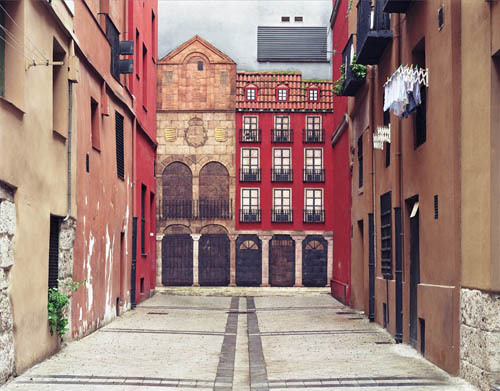
© Isidro Ramírez, Landscape No. 61
Mostly, what helps us make sense of images, is the context in which they are presented. These archival materials you mention are a good example of how images are found, recontextualised and presented in new ways to new audiences. Bellocq’s work comes to mind when I think of such an example. To an extent photographs are perfect malleable receptacles. To an extent the control the photographer seems to exert is just an illusion.
Returning to the issue of time. Today we are witnessing a growing anxiety on performance among photographers. The product takes precedence over the process in full respect of the failed Enlightenment vision. Some ancient philosopher wrote that what is done with no cure of time, time will not respect it. This is very true for many landscape brutally compromised. How true is this thought in your artistic experience and what advice would you give to students who will approach to this world?
IR: It is difficult to know if photographers now feel more the pressure to perform than before. Some think photographers now compete not only with their peers but also with anyone holding a mobile phone. In a way this is true and while during the mid 19th century photography was a difficult and cumbersome technique that needed high expertise and investment now almost anyone can do it. But, in my opinion, this way of thinking about photography only places value in the technical know-how and not in what I think is key, ideas and creativity.

© Muhammad Muhajir, Expendable Servants (student work)
I have been teaching photography for over a decade now and I always advise my students to nurture their ideas. It is also extremely important that students find an interest outside photography since photography is just the vehicle that we use to communicate and express ideas. Students should read, follow the news, take an interest in current affairs, watch films, talk, cultivate relationships and in general live intensely as much as possible and have a passion. Without this photographs would be just like empty vessels. I always make the analogy between photography and writing. Has a writer ever been remembered for having a beautiful calligraphy?
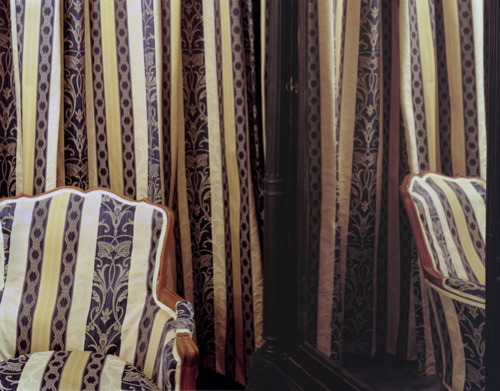
© Isidro Ramírez, France
In the series ‘Closed for Winter’, recently published in a book by The Velvet Cell, you also tell the story of your native land. Leaving aside the exotic temptations can we entrust to photography a role in relationship to the landscape and the people who inhabit it? What practical ways can be taken in education and, more generally, in a process of social awareness?
IR: I would like to clarify that this project was probably kick started by an old memory of growing up in Cadiz but it is not limited to its geography and, while I was producing it, I visited other similar cities around Europe – Alghero (which I found remarkably similar to my homeland), Lake Como and Genoa just to mention a few. These places were chosen for their social, climatic and economical similarities. All these places had areas that were exclusively designed and created for the summer time and mostly abandoned in the winter. Although some of these were far away lands I would still not describe them as exotic but more like home away from home. In a way ‘Closed for Winter’ does indeed tell a story of my experiences and I in my native land since one cannot walk away from their past and personal history. However this project was never intended to be about a particular place or group of people. I see it more like an exploration of a type of place and idea and how cold weather and seasons affect the man made landscape.
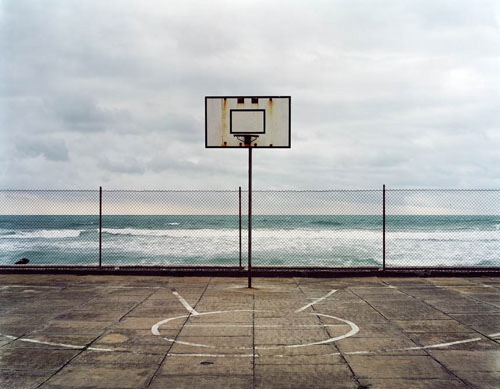
© Isidro Ramírez, Cape Trafalgar No.1
Is there any show you’ve seen recently that you find inspiring?
IR: I recently went to see the screening of ‘How to Make a Book’ with Steidl by Gereon Wetzel , Jörg Adolph. Gerhard Steidl was present during the screening. This was a rare treat here in Singapore. What I found interesting and inspiring about the documentary is to see how there are still people striving to create unique and remarkable books without worrying about their commercial success, rare and very inspiring.

© Isidro Ramírez, What We Don’t See No.1
Three books of photography that you recommend?
IR: In no particular order: Joel Sternfeld, ‘American Prospect’s. Hiroshi Sugimoto, ‘Time Exposed’. Taryn Simon, ‘An American Index of the Hidden and Unfamiliar’.
---
LINKS
Isidro Ramírez
Spain
share this page